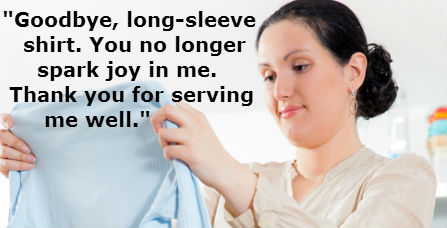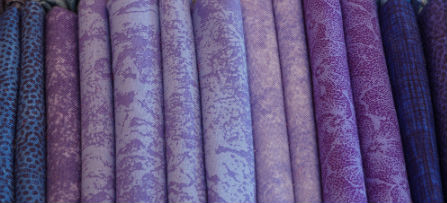Do you think touching your rarely worn jeans and saying thank you and goodbye to it before discarding it will solve the unending problem of clutter?
It could, but then it might not.
This is just one of several home decluttering theories recommended by a young woman, Marie Kondo, who has become a celebrity in Japan, mainly because of her surprising decluttering theories, and propelled by her book, “The Life-Changing Magic of Tidying Up: The Japanese Art of Decluttering and Organizing,” which has become an international bestseller.
Here are Marie Kondo’s main home decluttering and tidying methods:
1. Do your decluttering in one fell swoop.
Do it all in one go. It can take days. But once it’s done, it’s done, and you never have to declutter again. Kondo says that if tidying is done bit by bit, you might never complete it, and you won’t see any significant impact in your life. She further explains that as you’re decluttering once and for all, you’ll feel that you’re forgetting what’s past and starting anew.
The one problem with this method is that many people have a day job and have young children. Mostly, they won’t be able to set aside days just for decluttering. However, this method will work with single young professionals or anyone with time on their hands.
2. Before you start decluttering, ask yourself “Why should I declutter?”
Kondo says this will make you look into how you’re presently living your life and into the lifestyle you aspire to have.
3. Sort your stuff by category, and not by the usual room-to-room
style.
You can start with all clothes first, then shoes, books, and probably appliances and gadgets. Kondo says that sorting and keeping like things together lead to easier decluttering and more long-lasting tidying impact.
4. When sorting, touch every item, then ask yourself if that item sparks joy in you.
If the stuff no longer inspires joy, say thank you to it, say goodbye to it, and then throw it to your discard bag.
To some, this is new but good advice. To them, it does not mean anything other than a quick ceremony to finalize a separation, similar to those verbal affirmation done in many self-help steps. Kondo writes about the benefits of being grateful for what we have and letting go of things that no longer matter.
While some people cannot imagine doing this with no other reason than just being weirded by it, others strongly disagree with it, labeling this as a form of anthropomorphism or animism that goes against their scientific or spiritual beliefs.
5. Greet your home when you get back home.
Again, some feel this method as something arising from feng-shui or religion. But if we want to learn something from this, it might inspire us to create our own version, like saying “Wow, I’m blessed to be coming home to a nice home, great spouse and kids” and that would be a springboard for a great dinner.
6. Treat objects with respect and thank them for their service.
Kondo says that objects will last longer if they’re treated with care and respect. Saying thank you to a chair might not actually make the chair happy and stronger, but if you recognize its importance, and you’re thankful you were able to afford it, you’ll pull and push it with care, and it will remain unblemished for a long time.
7. Do not buy expensive storage systems.
Kondo says you have enough storage containers. Buy no more.
Surely, storage box makers won’t like Kondo for saying this. But Kondo is saying we have all the stuff we need, so we use what we already have.
8. Throw all papers away.
When Kondo said that papers will never spark joy and must be thrown away, she must have forgotten that investment certificates, real estate titles, personal letters and greeting cards spark joy in many of us. There are also old photographs, sketches, brochures and other printed items that can fetch money from collectors, and there’s certainly joy from that.
We can make our home almost paperless though. Photograph important receipts and papers then put them in cloud storage, and subscribe to electronic bills.
9. Fold t-shirts and store them vertically, similar to how books stand side by side on shelves.
This arguably is a new idea, as it will make searching and getting easier, and just by thinking about it, this method might be great with jeans and shorts as they’re stronger, and can therefore stand on their edge.
10. Assign a space for each item, and then always put that item in that space.
This is similar to the often-preached phrase “a place for everything and everything in its place.”
We may not agree with all that Marie Kondo is recommending for home decluttering, but we can learn from many of her principles. We tidy our mess, we take care of our living spaces, we put our affairs in order, and then we will see dramatic improvements in our lives.



